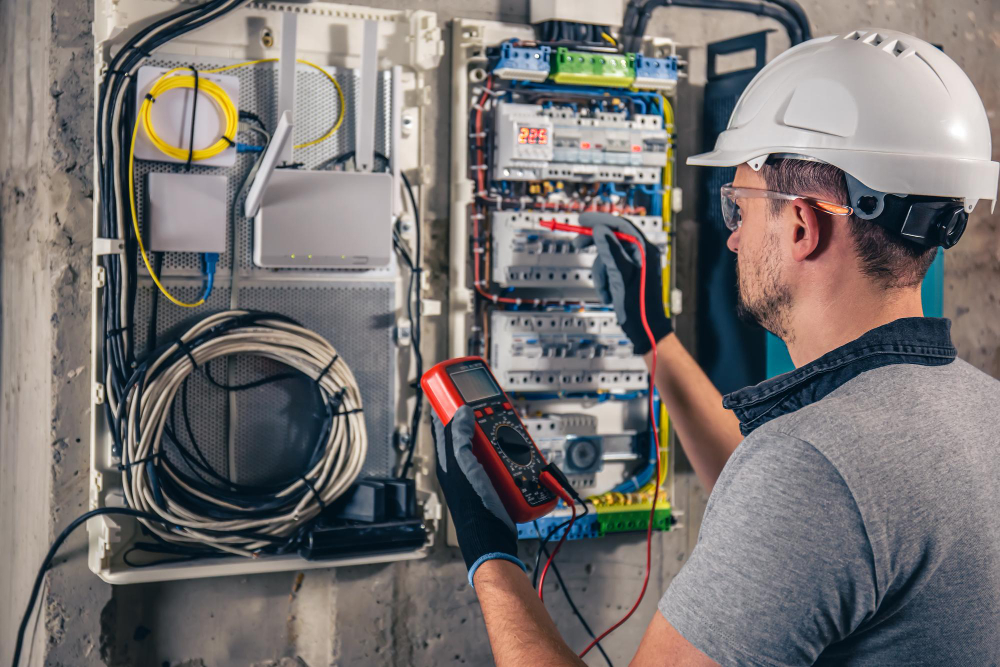Since the 2018 update to AS/NZS 3000, one loose earth or RCD that isn’t labelled can stop the whole job and cost you a lot of money. Lucky for you, you don’t need to be a lawyer to understand wire rules. You only need these simple habits that fit right in with how you work now.
1. Maintain Good Locking and Bonding of Wirings
The updated AS/NZS 3000:2018 Wiring Rules provide stronger bonding requirements for any metal that may carry fault current, such as solar structures, HVAC pipes, and stainless steel stairs. Make sure you know how the earthing calculator works before ordering a roll of wire.
Type in your solid resistance, conductor size, and current fault. You should save the PDF in a drive folder and remove the loop-impedance number from your single line.
2. Pick the Right Cable
Ratings in catalogues are based on 30°C air temperature, but your site doesn’t look like a climate-controlled store. On paper, a wire that can handle 100 A might not be able to handle 70 A when it is bundled up in a hot roof cavity. Make your cheat sheet with Table 4’s degrading factors, laminate it, and stick it on your primary board.
Mark hot spots on the job site with neon tape so the trainees don’t have to snake TPS through a sauna. Your kit should remember the 50 mm separating power and data. If it does, you can avoid half of the most common mistakes.
3. Treat RCDs Like Life Savers, Not Just Stickers
Since the 2018 update, wiring rules the trip times are more limited, weak push-button pokes won’t work. So every single time, you should do these four steps:
- Determine the type of push-button: is it AC, A, or B?
- Show that the push-button pop works.
- Check the trip current with a ramp test.
- Polarity test (0°/180°): time for the nail to trip.
After each step, take a picture of the tester’s screen and store it in RCD Proof.
4. Do the Paperwork While You Work
Use a QR code test sheet app and simply scan the code on the device. Check off the test you just did, and auto-save to the cloud, and you’re done. Picture logs of wiring labels are great for sales. The next client will understand why you’re worth a little more than the cheapest bid if you show them a gallery of clean terminations and laser-printed circuit IDs.
5. Run a Pre-Flight Check Before the Inspector Shows Up
Use Appendix H, which is a list of things to do. You should print it, sharpen your pencil, and walk around the job. Then you read all the labels and tug on every lug and earth.
As an extra step, colour-code your spreadsheet and send it to the manager so you have no worries on inspection day.
6. Continue Learning Even in 10-Minute Bursts
You will sell more if you have clean switchboards and no delays for rework. Now attach a checklist that will scream a safe pair of hands. Keep in mind the following:
- Plan earths & bonds first. PDFs ready = instant credibility.
- Derate your cables. Cheat sheet + tape re-runs.
- Test RCDs properly. Four steps, photos, folder, and cheap insurance.
- Log docs in real time. QR beats late‑night paperwork.
- Pre-flight every job. Pencil checklist = green/red sheet = no surprises.
Mastering Your Compliance
These smart habits on AS/NZS 3000:2018 stop being a brick in your toolbox. You’ll breeze through inspections, keep regulators off your back, and pocket more margin-without breaking a sweat. Now that you’re familiar with them, you can surely master and nail your electrical installation compliance.







